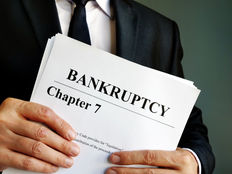
When it comes to safety in fixed income, municipal bonds have long proven their mettle as a strong, secure way to generate income and returns. After all, in theory, a state or local town has the ability to raise taxes to help pay for coupon payments and make investors whole. And history suggests just that.
But it isn’t always the case. Municipal bond defaults do happen.
With recession risks rising and new trends emerging, some analysts are predicting we could see a new wave of such events in the staid muni market. So, what should investors do? Is it time to abandon our muni bonds and look toward greener pastures? History is a good guide.
Be sure to check our Municipal Bonds Channel to stay up to date with the latest trends in municipal financing.
Rising Defaults
Municipal bonds are issued by states, local governments, public universities, and other entities to help fund special projects or general operations. Investors—particularly high-income earners—love them because of their tax-free nature. Interest from munis is generally free from federal taxes and can also be free from state and local taxes, depending on the issuer. Pension, endowment, and insurance funds love them because of their stability and safety. For example, California or Texas can—in theory—raise taxes enough to cover their obligations and make investors whole.
As a result, munis often form the backbone of many retail investors’ taxable accounts and institutional investors’ fixed income portfolios.
But the thing is munis aren’t as ‘good as gold.’ Occasionally, defaults do happen. And so far, this year, those defaults have happened more often. For January, first-time payment defaults have jumped 122% year-over-year to reach $611 million. That marks the third highest month since 2019. Meanwhile, the average five-year municipal default rate since 2012 has increased to 0.1%, up from 0.08% since 1970.
Some analysts are predicting more could be in store throughout the year. Recessionary forces have the ability to hurt cash flows that support munis. Lower sales at companies directly impact corporate taxes. At the same time, lower revenues for corporations result in employee layoffs. This hits payroll taxes and sales tax. Going out further, declining property values can hit property taxes. As such, the spigot of cash that state and local governments pay for munis can quickly go from a torrent to a trickle.
And that’s what some analysts have predicted for the new year. For example, Bank of America now estimates roughly $1.7 billion to $2.1 billion worth of muni bonds will default in 2023. That’s more than 2022’s default of around $1.33 billion.
Check out this article to know more about the potential risks associated with muni bonds.
Putting the Numbers Into Context
A potential 58% year-over-year increase in the number of defaults in a normally very sleepy sector is nothing to sneeze at. It’s no wonder investors may be concerned with their fixed income portfolios. But if history is a guide, munis are as safe as ever.
For starters, state and local government finances are actually pretty good. Thanks to stimulus cash and the last few boom years, many states have beefed up their rainy-day funds. According to Nuveen, on average, states’ budget stabilization funds have grown to 12.4% of general fund expenditures in 2022. This is up from 6.9% recorded in 2019. Moreover, a potential recession is expected to shrink state government revenues by just 3.1% for all of 2023. To put that in context, the Great Recession saw state revenues fall by 8% in 2009.
On the backdrop of higher state slush funds and only a slight dip in revenues, investors need to focus on the kinds of munis that are in danger and that have historically defaulted.
Looking at historical muni defaults, a trend begins to emerge. According to Vanguard, the vast bulk of muni defaults were the result of highly indebted single issuers or bonds tied to special projects like stadiums or transportation projects. The sudden increase in defaults last year and this year could be traced to bonds issued for the construction of nursing homes and hospitals. Meanwhile, general obligation (GO) bonds—which make up the bulk of munis issued—have stayed steady since the 1970s. The 10-year average default rate for AAA rated munis is 0.00%, while AA rated bonds stand at 0.02%.
Finally, municipal bond structure makes fixed income investments pretty sound. That’s because the bulk of GO bonds have payment structures similar to a home mortgage or car loan. Each payment includes both principal and interest. This eliminates the large principal payment at the end of the life of the bond and reduces the risk to a state or local town’s balance sheet.
Munis Are Still a Big Buy
Yes, recessionary forces could impact the municipal bond market. However, the bulk of that impact will be regulated to certain segments of the market. The vast bulk of munis remain in top-notch condition. Better still is the impact of defaults on a diverse ETF or muni fund is limited. For most of us, how we get our muni exposure somewhat eliminates the default problem altogether.
With that, adding a dose of munis in a taxable account makes sense. And there are numerous ways to do just that. Funds like the Vanguard Tax-Exempt Bond Index Fund ETF (VTEB) or Fidelity Municipal Income Fund (FHIGX) can be tapped to add passive or active exposure to the bond sector.
The Bottom Line
The end all, be all is that munis are still a great place to find safe, reliable income in the bond world. And while defaults do happen, they are rare. These days, the underlying fundamentals of states provide a big safety net.
Sign up for our free newsletter to get the latest news on municipal bonds delivered to your inbox.






